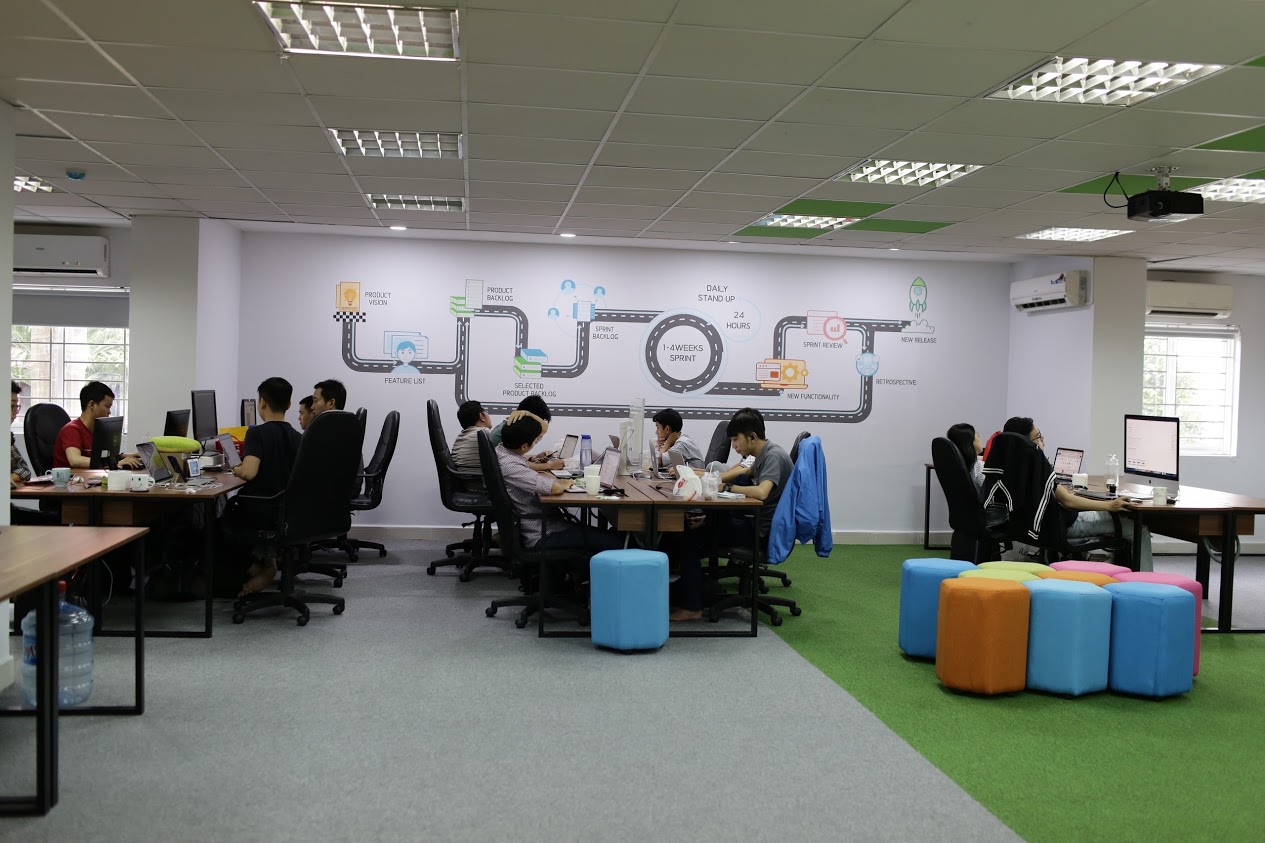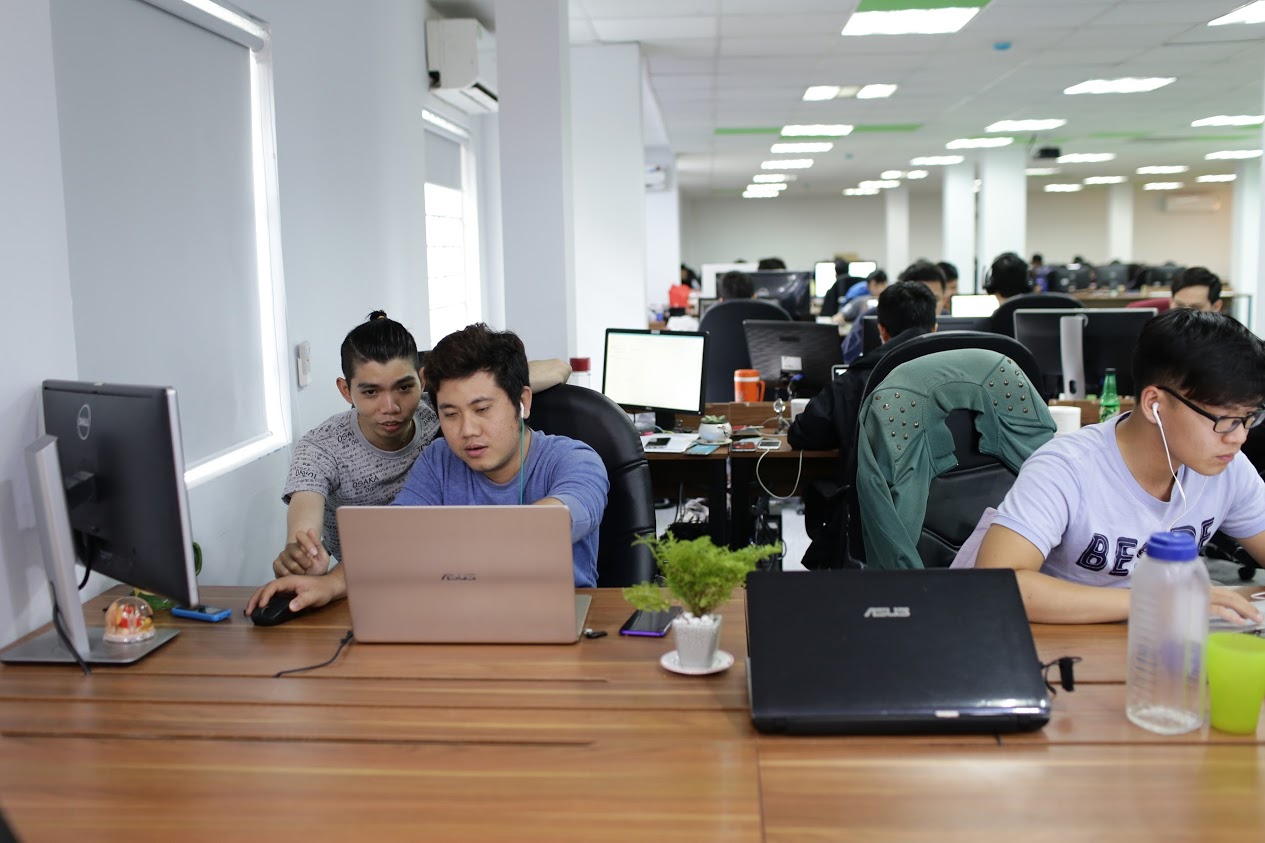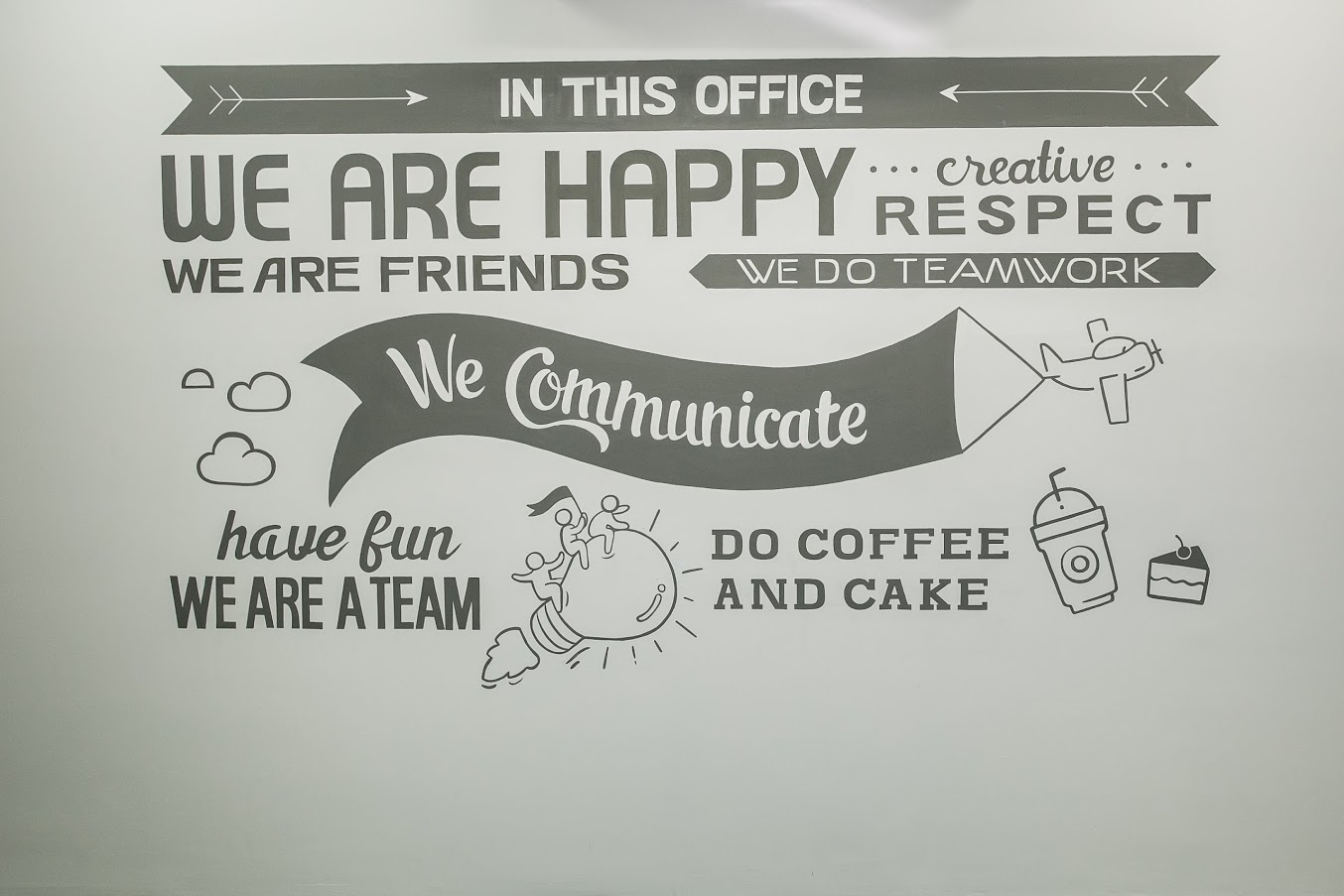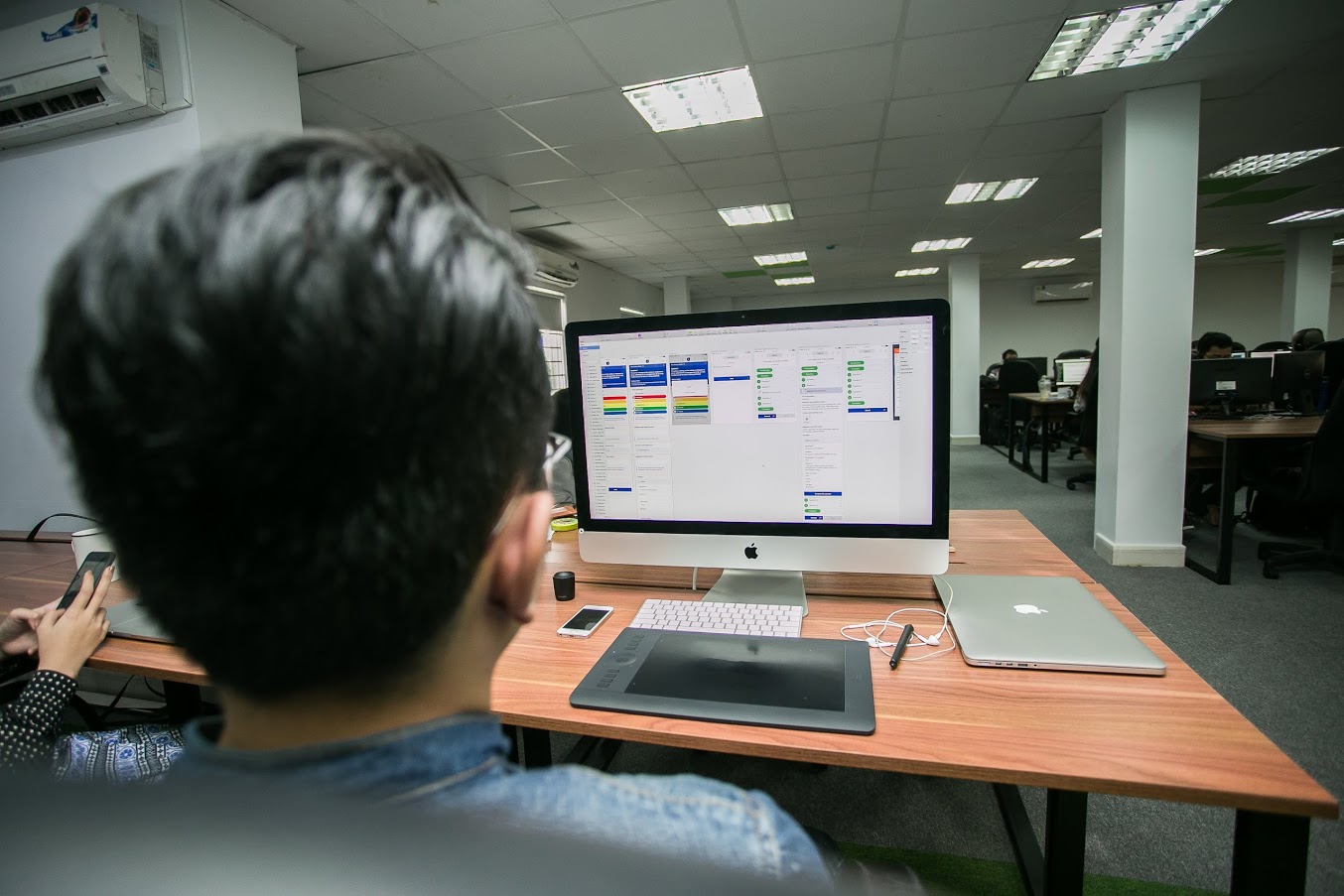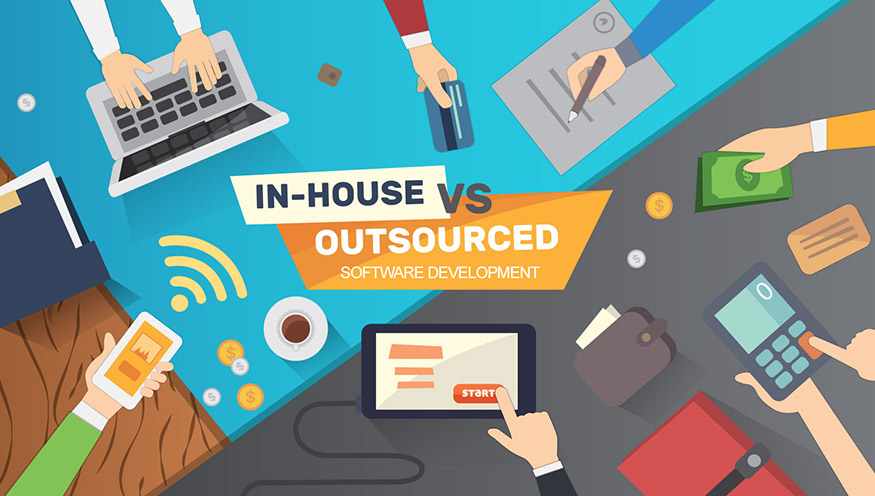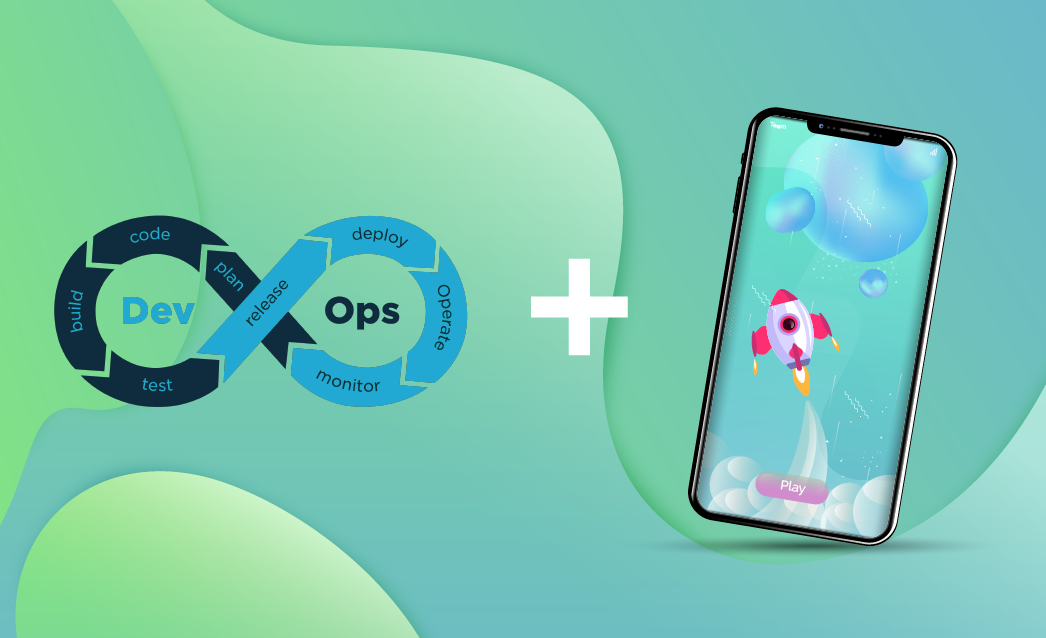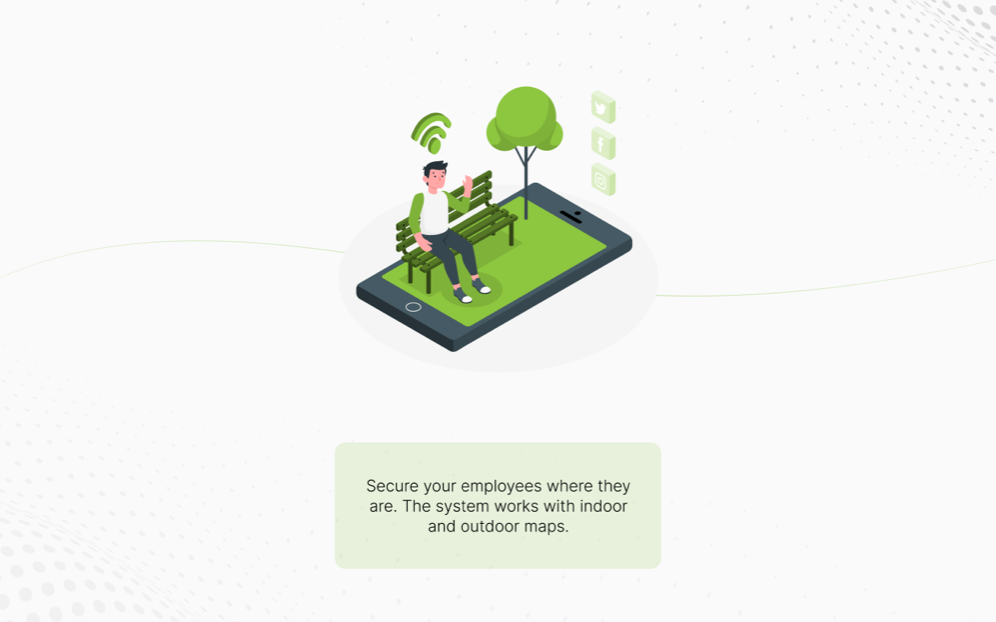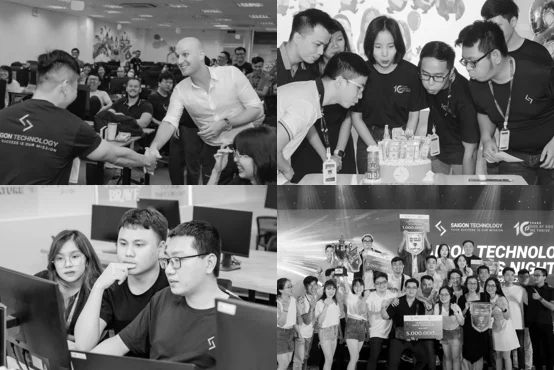Custom App Development: The Ultimate Guide To Build Successful Apps For Businesses

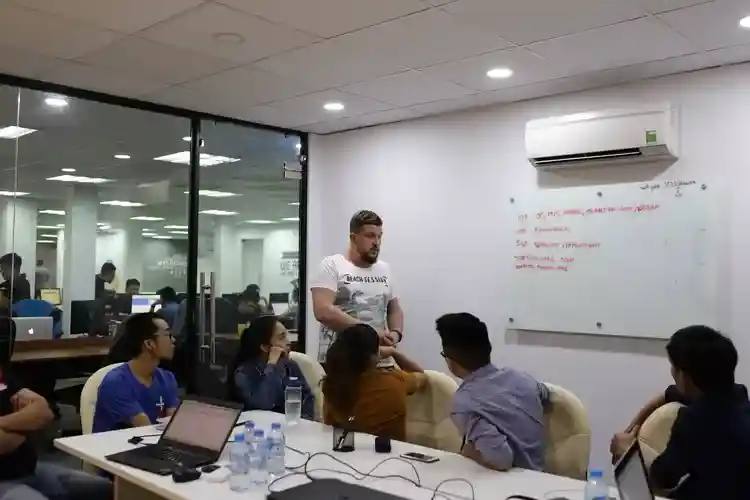
The market of apps is getting a bit crowded in 2022. A total of 3.59 million applications and 984,000 games may be found in the App Store on an Apple device. You probably arrived here because you were unable to find a suitable app in either App store and Google Play. They're all good in their own ways, but none of them offer all you need to fix your unique company issue versus building a custom app.
Let's go into the nuts and bolts of custom app development, beginning with the idea and business strategy and on through the product launch, marketing, and income.
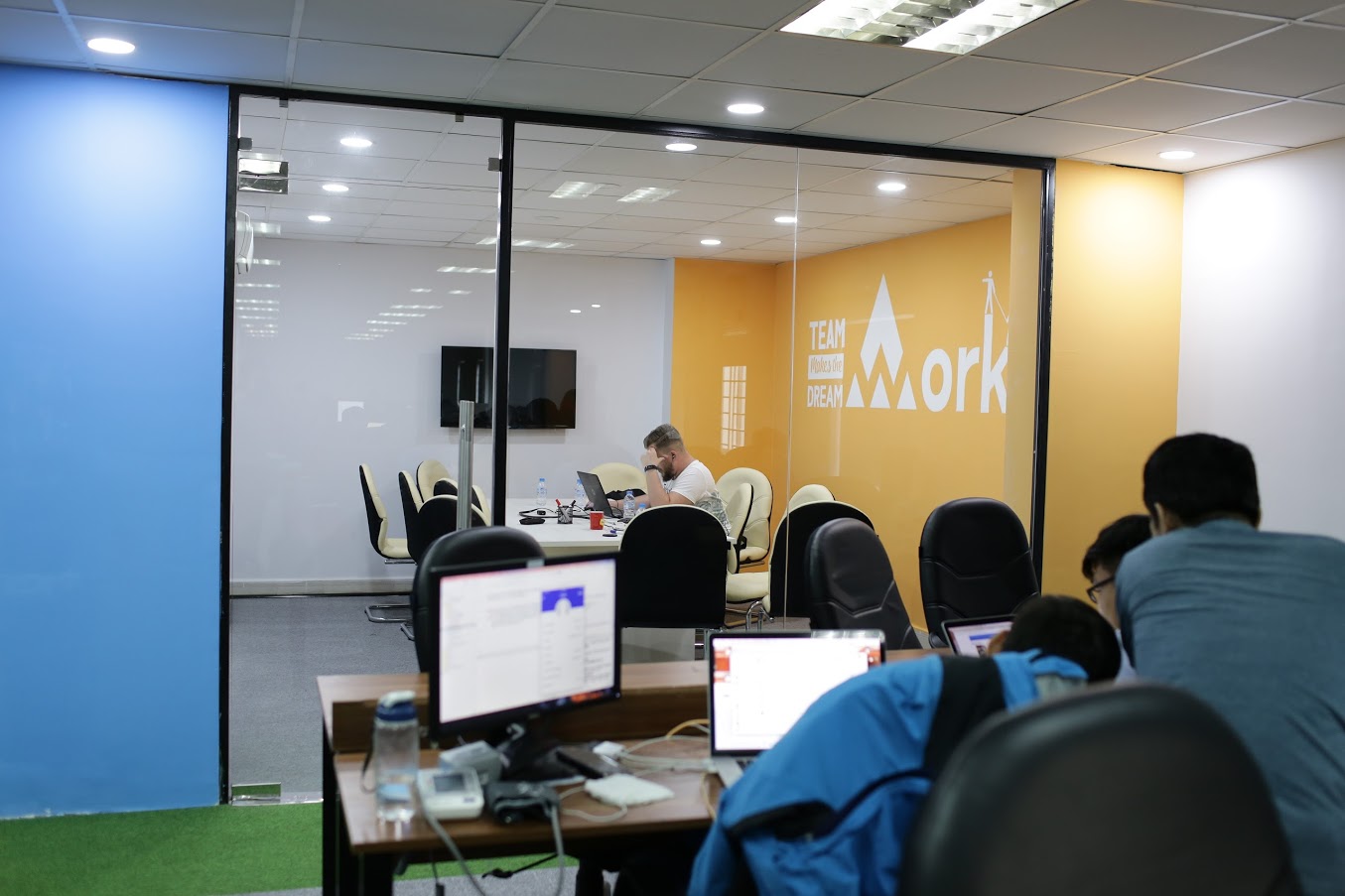
Software Development vs. Custom Software Development
The umbrella term of custom software development encompasses all practices, stages, and activities related to delivering a software idea to the market: from the concept to a ready-to-use solution. It includes:
-
Project specification
-
Design
-
Programming
-
Testing
-
Bug fixing
-
Maintenance
-
Documentation
There is a wide variety of professionals offering their services in the field of software development, including programmers, designers, testers, and more. They are all contributing to the overall process. But that's obvious; the tricky part is explaining the distinction between software engineering and custom solutions.
It might be true that a business’ demands drive the custom app development by a dedicated team of programmers. Still, there is a distinction.
► Learn more: Custom Software Development Services We Provide
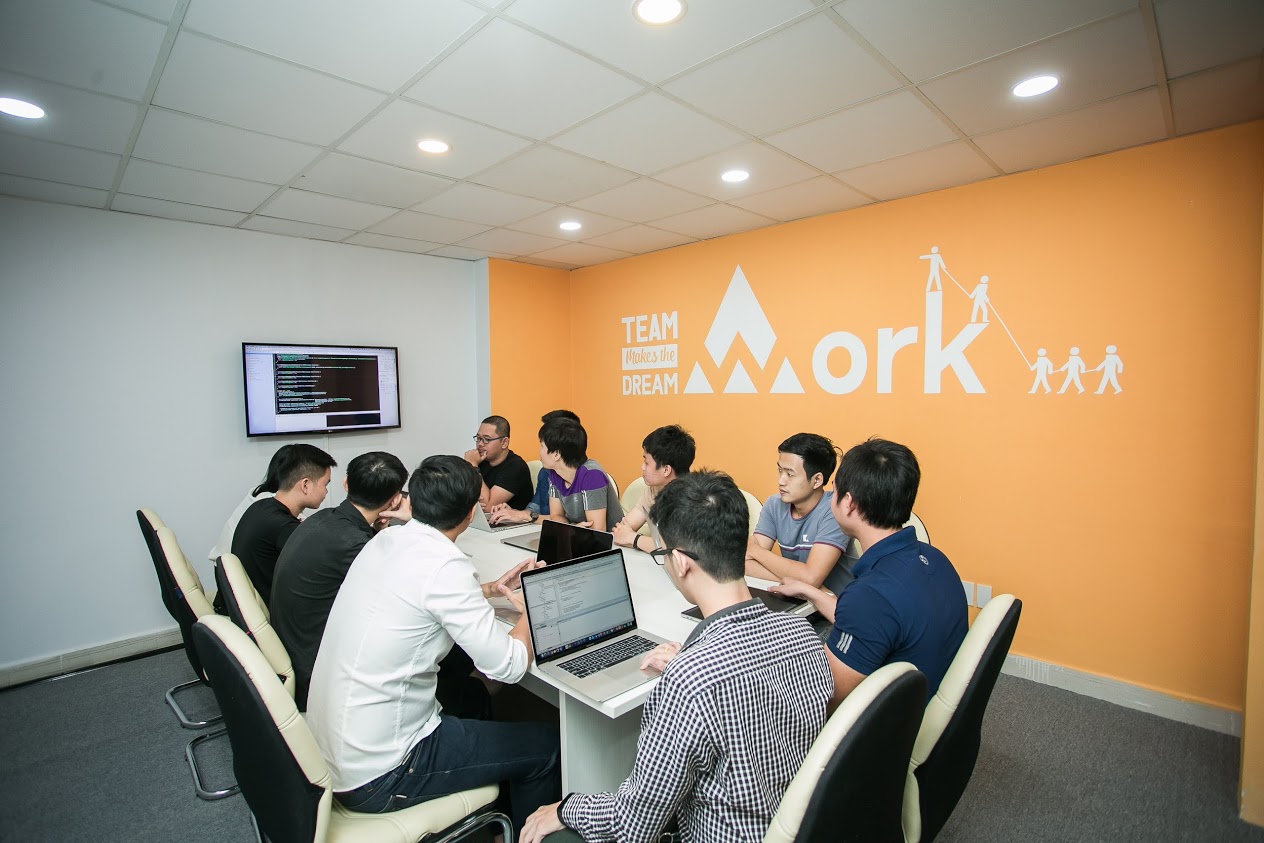
Off-the-shelf vs. Ready-made Software Apps
Traditional software development can run in several ways:
1. no code
2. low code
3. custom
The first two are frequently merged into the category of ready-made apps, while custom app development is an off-the-shelf option.
-
No-code development sounds self-explanatory – it does not require developers to know the code. There are special tools like Airtable or Appy Pie that provide a set of drag-and-drop tools for app creation. They have appealing visual design and intuitive experience for people without a technical background. The no-code solutions are beneficial when a simple app needs to be launched in a short time, and there is no need for any specific features.
-
Low-code development is the middle ground between no-code and custom app development. Low-code platforms provide the same easy interface with app features that can be dragged to the final solution. However, they have certain elements of customization in terms of the order or visual appeal of the end product. The possibility to adjust the low-code app to your company’s specific design is extremely limited yet possible with some effort.
-
To build custom app requires high skills in coding and results in sophisticated and easily-adapted solutions from an appropriate custom app development company. This approach allows creating an app that responds to one’s business needs and requirements; plus, it can be altered once the business direction or market demand changes.
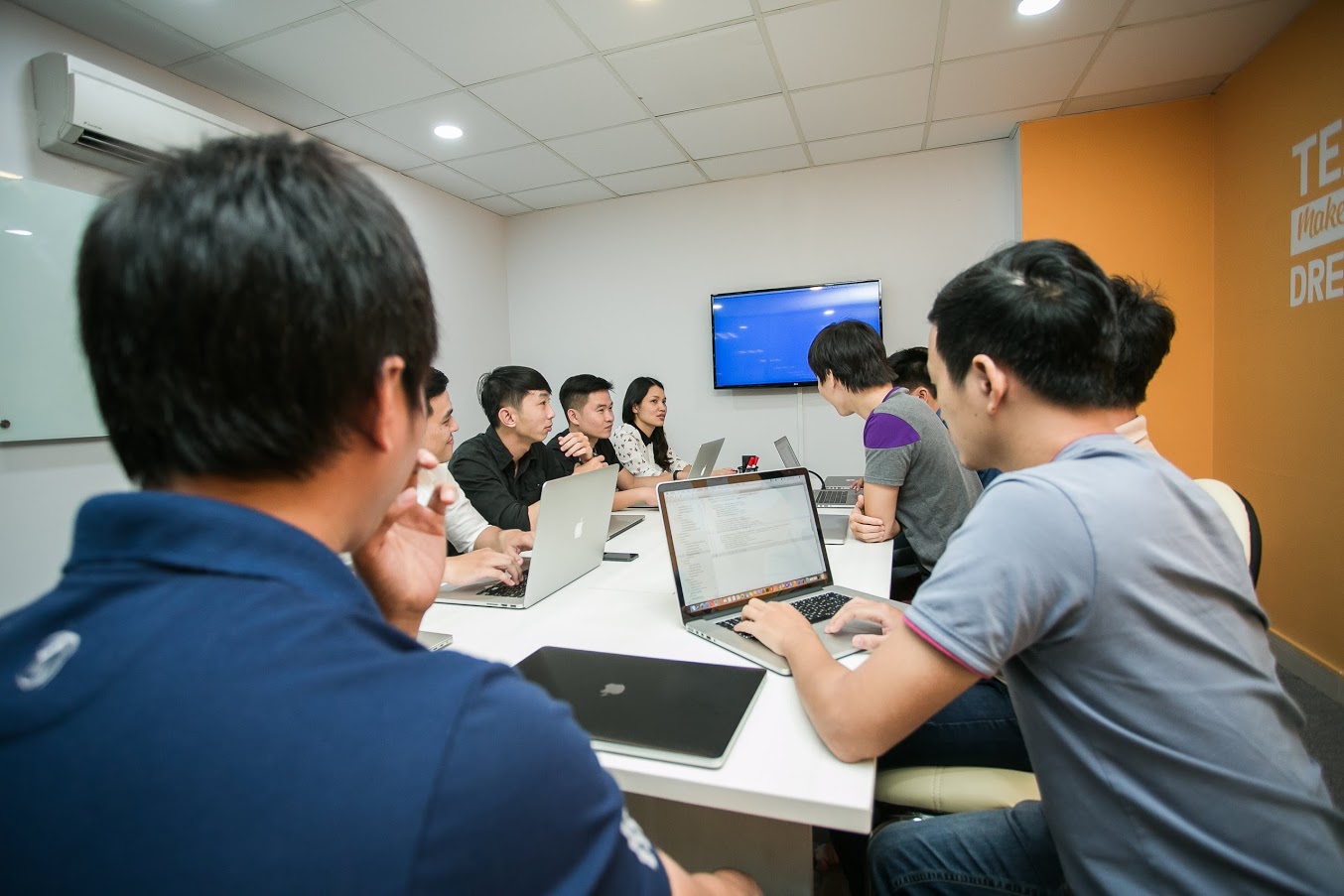
Benefits of Custom App Development Services
Tailoring makes a huge difference on how well an item of clothing fits its wearer, and the same is true with apps. If you need to shine and stand out of the crowd, then a customized solution - or a custom app in particular - can do the trick much better. Here is why:
-
Cross-platform application. When a client orders custom app development, they decide which OSs, devices, models, browsers, and versions of all those are supported by the app. The low/no-code solutions frequently have a very limited selection.
-
High security. This is a distinctive and essential element of customization since the dev team can build-in any security feature you might need (two-step verification, blockchain, ciphered data, etc.) This, in turn, decreases the risk of piracy and increases customer loyalty.
-
Planning in advance. A custom app can be designed with the future vision to scale, connect to other services, grow for new features, etc. This benefit works best if you are using the same development team for the current and future app building.
-
Smoother connection. Some low-code apps are hard to connect to the existing systems, especially when the programming languages or codes do not match. With a custom solution, this problem does not exist because the app is specifically designed to seamlessly connect with the existing and even legacy systems.
-
Storage location. Today, custom app development services often use cloud data for the app's quick and effective operation, while the ready-made versions would require a server to run from. This entails an extra cost and a higher risk of the app crashing.

What is Custom App Development?
Custom app development involves a high level of adaptability to the requirements of a client. The release after custom web development or custom mobile app development finishes is frequently one-of-a-kind since it contains a particular set of features ordered by the client-company.
A custom app might be created for external users (e-Commerce, games, educational), but it mostly goes for internal users (customer management, production monitoring, time tracking). Custom development solutions frequently address specific needs via tailored features rather than standard software solutions.
What is Custom Web Application Development?
Custom web application development is an instance of the umbrella term above. It is focused on the development of applications accessed by users via web browsers from their computers, phones, tablets, and any other devices. The main feature and advantage of custom web application development is that the client can ensure their solution is accessible and responsive on screens of all sizes and in all browsers.
What is Custom Mobile App Development?
Custom mobile app development is similar to the web app development services described above, but it is focused on delivering the best options for the existing operating systems and mobile devices. A mobile app development solution (including custom Android app development and custom iOS app development) needs to ensure that the app:
-
is available on the most popular models of mobile phones, tablets, and wearable devices
-
can adapt to any screen size
-
is compatible with the top operating systems
-
will adapt to the future OSs, screen sizes, models (for example, to the foldable smartphones)

The Process of Custom App Development
Custom app development can proceed in many directions because it is adjusted to the client’s needs and requirements. Some companies come for custom web app development with a ready-made MVP and all the specifics listed; others would have just a general idea of what they want in the end. The process heavily depends on the project, the software, the specifics, and the client. Below is the list of stages of custom development solutions, which can be altered in many ways. Yet, should you have just an idea of the final product, then once you decide to build custom app, your plan would look similar to the following one.
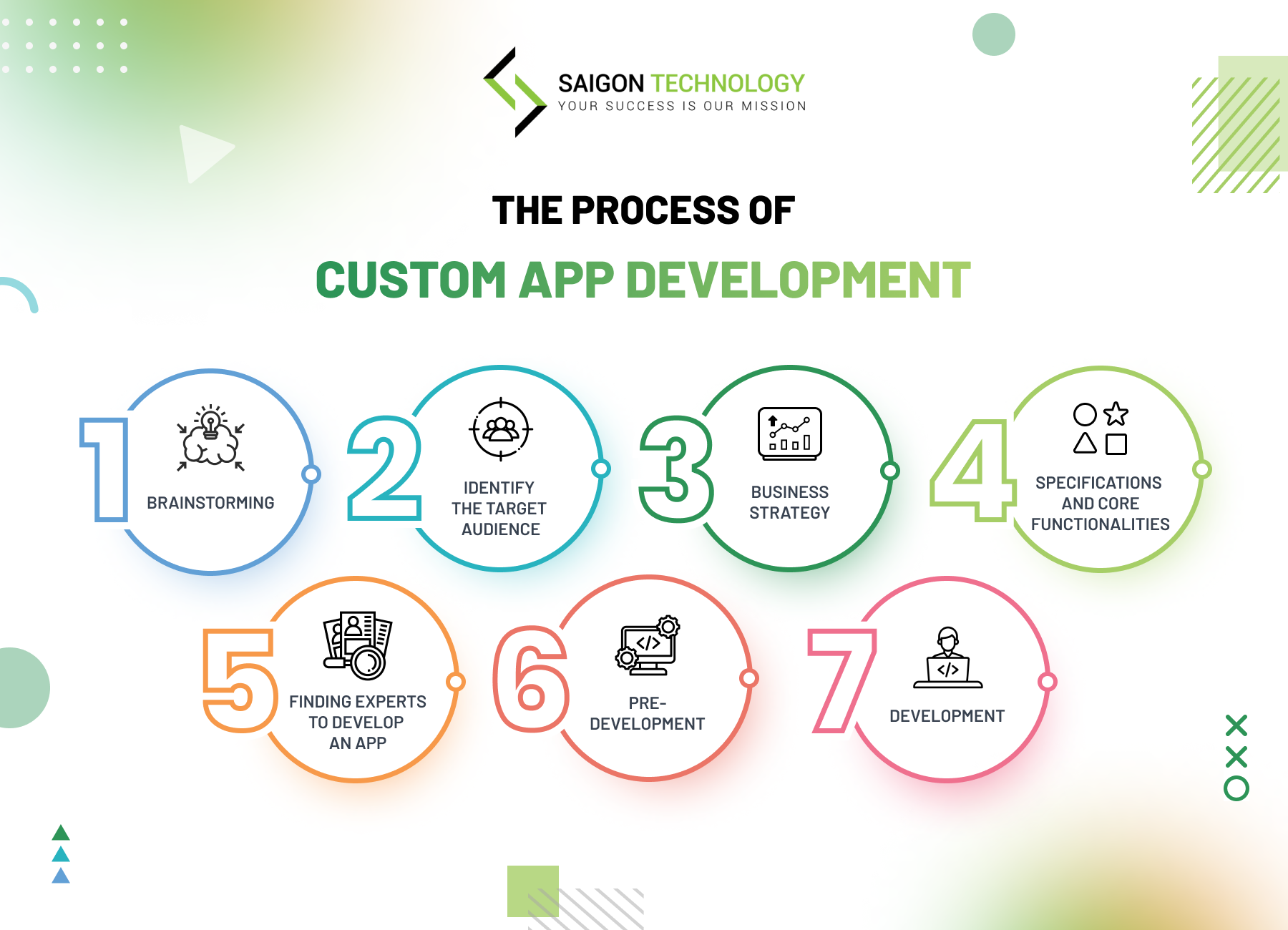
Step #1: Brainstorming
This step would probably be finished before you approach a custom software development company. If you are an investor looking for an opportunity, then brainstorming would be your starting point. Consider the problems existing in your country, region, or company, and the ways how an app can fix them.
For example, the founders of Airbnb were looking for a way to earn a couple of extra dollars and turned the idea into a $31 billion company. These ideas seem obvious today because the services can indeed facilitate many lives. Consider thinking of such facilitation or issue for your idea before contacting a custom application development company.
Step #2: Identifying the target audience
When it comes to creating custom apps, you need to understand who will be using your solution. The examples given above are pretty much universal. Yet, for custom mobile application development particularly, Uber is mostly for users aged between 18-60, Airbnb is focusing on students and low/middle-income travelers, while Duolingo is for people with the lack of funds but a strong will to learn a foreign language.
Of course, these are pretty vague descriptions of the target audience for an application, yet this is an excellent start to your marketing research.
Imagine a perfect user for your future app:
-
Who are they? (gender, age, location, occupation, income, etc.)
-
How often do you expect them to use the application?
-
What makes your app unique in the market?
The easiest way to collect this data is by simply asking people around, more specifically seeking advice from a custom mobile app development company or custom web development company. Set up online polls and find out what the potential audience prefers. Remember to collect their data for developing your target user profile.
Step #3: Business strategy
Once the user and the problem are ready, it is time to carefully plan how your custom apps will generate revenue. The kind of strategy you select for the new project will also impact the customer satisfaction rate and the speed at which your goal will be reached.
Answer the following questions first:
-
How will you reach end-users? How will they learn about the app?
-
How much acquisition of one user will cost?
-
How much of a budget is needed to gain market traction?
And yes, you might think that these answers can be put up for later, when your custom web app development project is finished. Yet, the earlier you begin marketing, the faster you will get revenue after the app is released. Moreover, the business strategy impacts whether the app needs deep linking, slots for ads, SEO optimization (to make the apps searchable in Google or App/Google Play Stores), etc. These elements are useful for the technological side of the application as well.
While formulating your business plan, also think about who will be buying your future app and how it will be delivered, whether it be to individual consumers via app stores or to businesses for internal usage. The in-house custom mobile application development generally requires less marketing-related development per se. Still, it needs more efforts to make it compatible with the client’s internal systems and the remaining apps. The wide public availability requires more work on the app optimization and adaptability to the variety of end-user devices.
Step #4: Specifications and core functionalities
Creating the specifications is an essential step, even if you are not a tech person and cannot define them in IT terms. For instance, the overall functional and technical specifications for the future software will help developers from the custom mobile application development partner understand your vision and create the exact solution you need. Here is what will be of great help:
-
Define user roles: think who will be using the app, for instance, teachers and students, self-learners, registered/non-registered users, returning customers or new customers, etc. The roles heavily rely on your app’s general idea.
-
User journeys: consider how each of the defined roles will be using your app or how you want them to do so. The easiest way is a flow chart with arrows and particular elements of the app.
-
Plan the app: this means only high-level planning like the expected number of screens and their names, buttons, functional design.
-
Set up a list of features: what you expect the app to do and how it will be done; plan any integrations (with banking systems or YouTube, for example), app analytics to alter your future marketing effort, monetization methods (in-app purchases, ads, pay-per-download, etc.)
There are no rights and wrongs at the stage of planning because the more information you can collect and define for the mobile and web application development company, the faster and easier you can get the final result.
Step #5: Finding experts to develop an app
With an idea, tech specifications, marketing strategy, and a business plan, it is just the right time to find a reliable partner to develop an app.
-
Go through listings: start your search by going through the listing websites like Clutch.co or The Manifest. Use the filters to find a custom software development firm in your region or a specific list of services.
-
Check the portfolio: browse the websites of selected teams and see if they have ever worked with applications like yours. Try to go with the companies that worked in your segment before because they can offer greater insights into the market needs and trends.
-
Read the blog: a blog is a place to meet the team before officially doing so. You can look through the articles to see the company’s focus and consider their knowledge base as a sign of experience.
-
Check market presence: market presence would involve the firm’s participation in any conferences or possibly any awards received. See also whether apps developed by them are popular and how their social media strategy works.
-
Check customer feedback or referrals from trusted sources: it is much easier to work with a company with positive reviews or referrals from the people you know. But consider also opinions in the online world to compare the feedback.
-
Focus on data and technology security: this point can be evaluated only during direct contact with the selected company. Try to find a team that can define their security strategy for you right away because it will give you clarity on their approach.
-
Spotlight on delivery time: be ready that delays in software development do happen. However, discuss the timeline and the delivery time you expect the selected custom application development company to follow. Scrupulous time management is a good sign (it can be evaluated by the way they show up for your first meeting/e-meeting).
-
Since you are reading this article, you have already decided to outsource, so the question is an offshore or onshore team. Offshore development companies in Asia and Eastern Europe tend to cost less while providing a similar and frequently higher level of support and expertise. The onshore teams would cost more; yet, they are in the same time zone that would facilitate communication.
Pro tip: While a difference between offshore development and onshore development does exist, the former points have more value. Get to this difference only if the previous ones fail to set the distinction.
-
Sign a contract: contract with all details, deadlines, tech specifications, etc. is the only document that can assist you in case of a dispute. Always make sure you read the papers before you sign them to get your company covered from any unfortunate incidents.
Of course, this is just a shortlist of the essential features you need to be looking for in a custom mobile application development partner. Yet, this is a good start for the upcoming cooperation.
Step #6: Pre-development
This stage is called pre-development because before custom web app development can begin, the outsourced company and your team will need to meet and define all project details. The latter can include anything from your drafts and ideas to their presentation of the app, from the pencil-and-paper concepts to the designer’s images and UX journeys. Negotiation is one of the essential elements of custom software development since it defines the whole project. As a rule, a development team will create a rapid prototype for your approval before getting down to business.
Build a rapid prototype
Please, do not mix up a prototype and an MVP because these are two different stages. A prototype is a piece of the app with clickable elements; it is a perfect way for you to understand how the app would work and feel once released. However, some developers would not be willing to do a free prototype since it still requires time and effort. In this case, you will likely receive some design drafts and user journeys in images to understand the upcoming working prototype. This part should be enough to evaluate which team works better for your values and who has a closer vision of your future app to start cooperation.
Build an MVP
An MVP is a minimum viable product. This is a mini-version of your fully developed application with just enough features to be released and used by early or test customers. This stage is still under the heading of pre-development since early tests might show that your initial idea of an app requires significant changes. It might result in a drastic alteration of the development director or even a complete abandonment of the idea.
MVPs verify whether you are creating an engaging experience for the end-users. Plan this trial run with your selected custom mobile app development team and see what feedback you can collect. For an internal app, ask several employees to start working on the new tool to see its pros and cons. For the mass-apps, those available to anyone through a Google Play/App Store, go to websites like UserTesting or Userbrain and ask people to use your app. See from how many interested users you hear back and what they have to say, pay attention to the demographics and analytics, then alter your target audience and approach if required.
Tip: Do not rush into developing all the features and releasing them to the market as soon as possible. If you’ve already won the hearts of some audience, then you get your core users. Listen to their feedback but do it selectively; if a user is continuously complaining about some features but continues to use the app, you are doing a good job. Try to improve and perfect those 5-10 features of the MVP before adding new ones and moving to the full-scale custom development solutions.
► Learn more: MVP Development Services at Saigon Technology
Step #7: Development
At the beginning of step #7, you already have the MVP, which sets the tone for the upcoming development procedures. And given that an MVP might be a great success or receive only positive feedback, you might not need the design stage described below. However, after the MVP, many custom web development companies go for polishing or even re-branding the application to give it a twitch of novelty and stir up the product’s full-scale release. The choice would depend on the budget, timeline, and wishes of end-users. In any case, the traditional custom developers would work within the following system.
-
Design
Here is a quote from Steve Jobs that needs to be put on the table: “Design is not just what it looks and feels like. Design is how it works.” You already have an MVP that satisfies most of the needs your users have. Do not reinvent the wheel at this point; consider incorporating feedback about your app’s usability, employ new design trends to refresh it, play with small animations for buttons and pages crossover, etc. Make small yet tangible changes.
-
Development
Development is where the magic of coding transforms an idea into an actual application. Most often, you will not have to know much about coding, development techniques, programming languages, selected frameworks, etc. The custom application development company will handle all of this. There are two things important for a client at this stage: you should decide on the app handover and control the process. The former means that before the development begins, you need to arrange the way you will take over the app once the development is done, plus the app storage location (your servers or the cloud). The upcoming development depends on this choice, so make sure you discuss it with the developers. The latter implies having regular meetings with the development team to track the progress. These meetings would typically take place weekly or monthly, depending on the development sprints and prior agreement. At such control points, ensure that the team is on track with the development timeline; they should face no major blockers and have no further questions for you as the client.
Testing is a vital element of every development. There are testers who identify major issues with the app’s performance or functionality and can alert the development team before the solution is pushed to the market.
Testing can be performed by the same custom application development company that is doing the core job or by an external team of QA specialists. The choice would be discussed upon contract signing. Testers are usually present at every development stage to minimize the negative impact, which bugs and app discrepancies have on an end user.
-
Training
This step is of high importance. Before the application is launched and available to the end users, your team should understand how to work with it. It is especially vital for custom apps developed for in-house use. Internal workers who will have direct contact with the application should understand how the app works, test it, and have a follow-up Q&A session.
Whenever you are creating an app for the end-users, training would mean a transfer of knowledge from the outsourcing software development company to the in-house experts. Your IT department needs to know how to handle the app, monitor, and control it once it is released, and the end-users will get a hold of its content.
-
Launch
Once all the details are finalized, and you are satisfied with the software, it goes live and becomes available in all the stores.
Best Practices of Custom App Development
The best practices listed here can be considered step #8 in the development process – the post-development routine. They ensure that your app remains trendy at all times and also provide continuity of efficient app functioning.
Listen to the users
This point has already been mentioned in the MVP part above. The collection of feedback allows a company to stay useful to its customers and improve the offered services. Voice Of Customer is one of the most powerful tools to know what the market thinks of your application and what the latter is missing. Besides the mere listening to your users, make sure you deliver the improvements or features they ask for. By following the customer’s voice, you can show them that you care about their opinion, thereby significantly increasing your brand loyalty. To collect the data and opinions, you can use third-party platforms like UserVoice, Braze, and Apptentive or create an in-app feedback form for that purpose.
Continuous improvement
Constant development and improvement of an app is the leading way to get continuous revenue. Bug fixes, new features, improvements, re-design, and other application changes make it relevant to your end-users current needs and requirements. Lack of development gets an application to the point of huge stagnation and a major loss of revenue. Keep it fresh and comfortable for the end-users and follow up on every improvement suggestion you get. If possible, contact the same custom web development team on board for improvement or sign a continuous contract on a project basis to have an expert team of programmers at an arm’s length.
Follow the user's cross-platform
Custom web app development is impressive. It offers a perfect way to access your application on laptops, phones, and other mobile devices. But it is essential to follow your users between platforms and mediums. This means that if a user is buying a web app, they should be able to continue their activities in a mobile app rather than use an optimized website on a mobile device. Furthermore, ensure that you develop an app for every trending OS since failure to account for the top ones will sooner or later lead to the loss of users. Ubiquitous presence should become your goal after the first app release.
Use competitive technologies
Competitive technologies in this context only mean that your code, selected language, and framework can accommodate changes; modern technologies are rapidly evolving and have a supportive community. For example, coding in Pascal makes no sense since this language lives only in the memories while Java is among the most common backend programming languages. Keep it consistent and straightforward, but make sure that the selected technologies give you room for perfection.
Protect customer data
In 2019, there were 1,506 security breaches in the US; all of them led to users’ personal data exposure. In the first half of 2020, the number of security infraction cases seemed to decrease, but the total count and companies’ losses are still in progress. Every breach and theft of personal digital data is potentially a huge scandal that many startups cannot handle. Instead of relying on a chance, you’d rather invest in customer data protection from the start by complying with privacy legislation regulations (like HIPAA and GDPR), use of privacy-as-a-service solutions, and adhering to the best practices (such as support of HTTPS or data encryption).
How Long Does It Take to Build a Custom Application?
Given that you will adhere to best practices and constantly develop your application, the answer is that it never stops. But you're presumably looking for a more specific answer: when the application is launched and starts to generate income. This procedure typically takes four to nine months, depending on a variety of conditions.
Custom app development timeline & factors
Here is how long every stage may take:
-
Planning and requirements: 2-4 weeks
-
Design and architecture: 2 weeks
-
Development: 3-8 months
-
Implementation: 2-4 weeks
-
Tests and maintenance: 3-6 weeks
-
Production: 3+ weeks
The actual timeline in custom mobile application development heavily depends on your project scope. A small application of time-tracking can be finished in three months altogether, while an extensive app for online shopping would require 9-12 months of development only. Below are a few factors that impact the complexity and length of your app delivery time.
-
Number of screens (up to 25 is pretty standard; more require precise planning, user journeys, and navigation)
-
Need for the admin portal besides the app itself
-
Support for multiple devices, platforms, and OSs
-
Integrations with other systems and applications
-
Data migration from the legacy systems
-
Business logic
-
Heavy reporting requirements
-
Changes of requirements/missing requirements in the process of development
-
Inconsistent data from stakeholders
What Makes a Custom App Successful?
The success of custom development solutions consists of three elements: marketing, user-centricity, and product itself. The combination of all three components guarantees profitability and good performance for both users and app owners. Let’s take a look at what these factors mean in more detail.
The marketing stage has already been discussed above. Its main component is targeting the right consumers. For instance, if you are in the market for a luxurious segment of customers, then the lack of an iOS-based app will significantly hit sales and revenue.
The user-centricity element encourages user retention, making people return to your application and use it again and again. You need to consider the custom apps’ overall design and intuitive UX/UI among the main user-centricity features. The application needs to follow the natural usage pattern and cover the key expectations of the users. You should also incorporate a support feature in plain sight, for example, a chat, so that anyone who got lost or needs a specific element of your application could receive professional assistance within seconds. Further, remember about accessibility and voice-led navigation in the app. By 2023, it is expected that 8 billion people would use virtual assistance technologies, so it is of utmost importance to plan such features for the future and begin implementing them now.
The product itself includes both of the above components; however, it also offers more technical reliability. Custom app development services must be at the A-level because these answers have to solve customer problems without keeping the users waiting for a page to load. Data protection and stable workflow without major maintenance windows or unexpected app crashes are what make users return and use the app further. In a single word, product greatness is its 100% reliability for the end-user.

How Much Does Custom App Development Cost?
The cost of custom app development is one of the most decisive factors for companies that are looking to get a perfect solution at the lowest price. Many clients expect to be given a very precise estimate for the forthcoming project, but instead are often met with the vague remark, "it depends."
The truth is that the cost of custom mobile app development services or custom web app development may vary substantially since it would be unfair to compare the costs of. However, we will try to define what impacts the final cost of an app the most.
-
The complexity of features. What seems to be natural for an average app user might be extra work for a developer. Push notifications, chat, feedback, integrations, use of a microphone or camera, and many other features, which are not obligatory present in an app, are additions. The more of them you have, the higher will be the final cost.
-
Design elaboration. A mere mock-up with nice colors and a pleasant feel is only part of the designer’s job. User experience is what presents a puzzle to some experts. If you have an extensive application, then the design of all features that will fit into one screen would not clutter it.
-
Cross-platform app development. Custom app development costs significantly less than cross-platform app development because it utilizes only one medium – Android/iOS phones, for example. The more OS versions, device types, browsers, and their combinations you add to the list of supported devices, the more development work is required.
-
Data usage and storage. Whenever an application transfers or utilizes customer-developed content in any way (photos in a messenger or articles on a platform), it needs a place to store them besides the options of publishing or sharing them. Cloud storage cost, any integrations with external sources, and access to a user’s device are all features that must be paid extra.
-
Human resources involved in the development. Big apps need big teams, so they cost considerable sums of money. Smaller applications can be developed ‘on a budget.’ The cost of every app development directly depends on the team members the project needs and utilizes. And in this case, team location, experience, and local salary would make an impact on your budget, and a great one!
-
Maintenance. Upcoming bug fixes, monitoring, cleaning, and maintenance should also be included in the price estimate as well. Once an application is released, the expenses are not fully covered because every product needs the support of a support agent (to collect the data) and a developer (to fix the reported issues), to say the least.
To answer the question raised: the cost of custom software development indeed varies. It can go as low as $30,000 for a small app delivered in 3-4 months or as high as $250,000 for a major complex project with a follow-up improvement plan. If you are interested in the cost of your app idea, contact us to discuss the project scope and set up the cost plan for you. It is free!
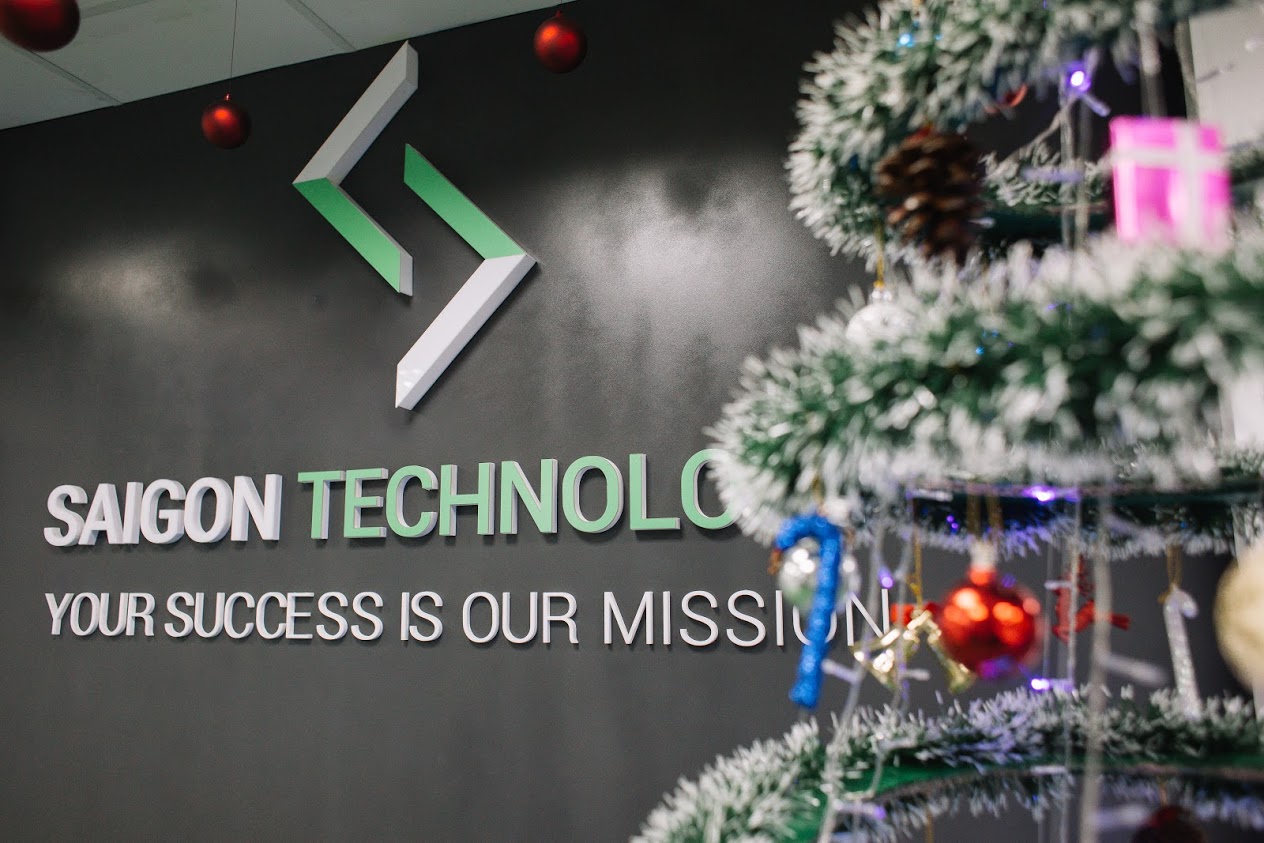
Top Custom App Development Companies in Asia
1. Saigon Technology
The Vietnam Software Association has recognized Saigon Technology as one of the top 15 Agile software outsourcing businesses in Vietnam for both 2019 and 2020. Their goal, as one of Vietnam's leading offshore software development firms, is to provide clients in e-Commerce, banking, logistics, transportation, healthcare, media, and other sectors with the most cutting-edge and reasonably priced Agile offshore software development possible.
The Saigon Technology Solutions headquarters are located in Ho Chi Minh City, Vietnam; nevertheless, the company has strong branches in four different nations including Europe, the United States, Asia, and Australia. Saigon Technology takes pride in its team members' diligent and creative work ethic in bringing the skills of young Vietnamese human resources to promote the IT sector abroad, through top custom app development services.
2. KMS Technology
In addition to being a major supplier of software development, testing, and consulting services, KMS Technology is headquartered in the center of Ho Chi Minh City in Vietnam. KMS Technology's international headquarters is in Atlanta, Georgia. They are sure they can wow their clients with their cutting-edge software solutions and attentive service.
Their whole team of engineers all received either honors or high distinctions in their fields. They're quick thinkers, full of energy, and always improving their production times. This may free up resources for them to concentrate on expanding their main offering.
3. NashTech
NashTech and its parent firm, Nash Squared, have collaborated on hundreds of projects for a diverse set of businesses and organizations. NashTech's ability to consistently wow its clients rests on the shoulders of a diverse team of hard-working, dedicated, and passionate people.
From two little outposts in London and Hanoi, Vietnam in the year 2000, they have expanded to more than seven locations throughout the world. They have become a household name in the software outsourcing industry because of their dedication to cultivating a culture where all employees are valued and encouraged to think outside the box, speak the truth, and embrace change with agility.
4. Positive Thinking Company
Positive Thinking Company is always striving to dominate the Swiss and European IT markets as an independent global technology company operating within the framework of a global delivery strategy providing comprehensive technological solutions.
In order to address the issues that its clients will inevitably encounter in the future, the Positive Thinking team employs a global delivery approach. By using a hybrid strategy that leverages both domestic and international distribution centers, Positive Thinking can provide its customers with more flexible delivery options. They are also able to find the sweet spot between proximity, affordability, quality, and danger.
5. TMA Solutions
TMA Solutions' original goal back in 1997 was to meet the need for high-quality offshore software outsourcing services among the most successful companies in the world. TMA Solutions is one of Vietnam's leading information and communication technology (ICT), artificial intelligence (AI), and internet of things (Fintech), and financial technology firms.
TMA Solutions provides complete solutions for offshore software development, including programming, testing, porting/migration, production assistance, information technology management, and graphic design. For TMA Solutions to continue to be the best offshore software development business in Vietnam, it has to cultivate a team of professionals that are well-versed in their field and fluent in English.

